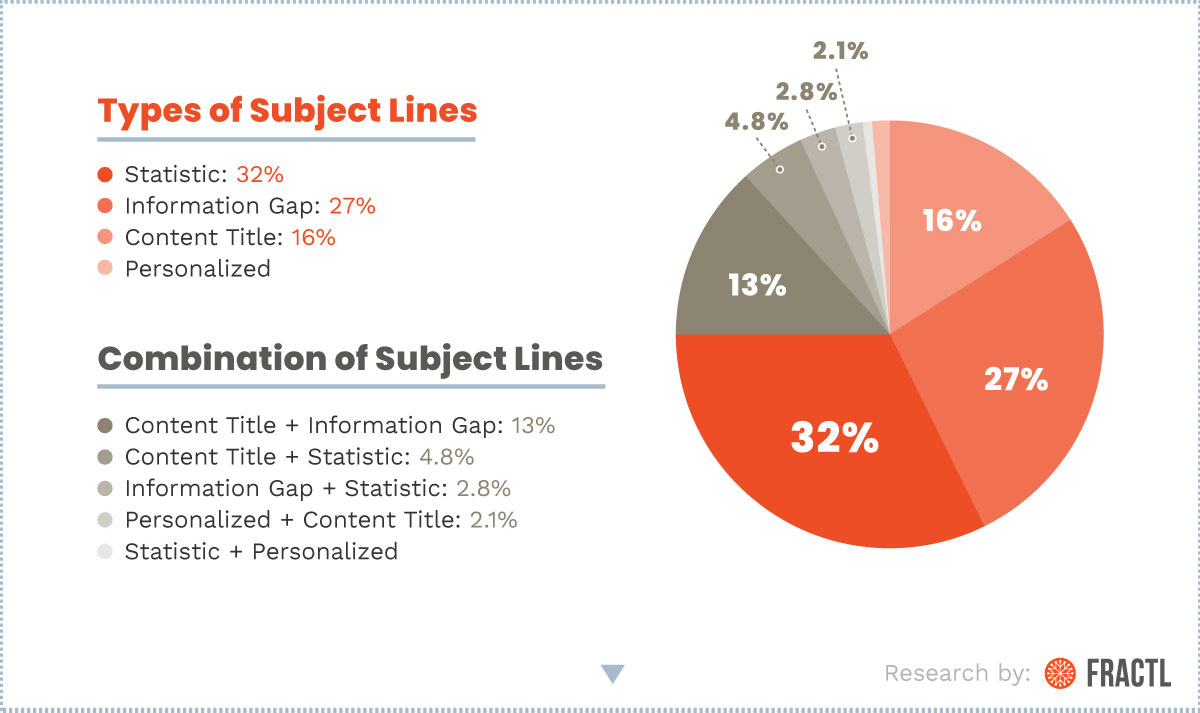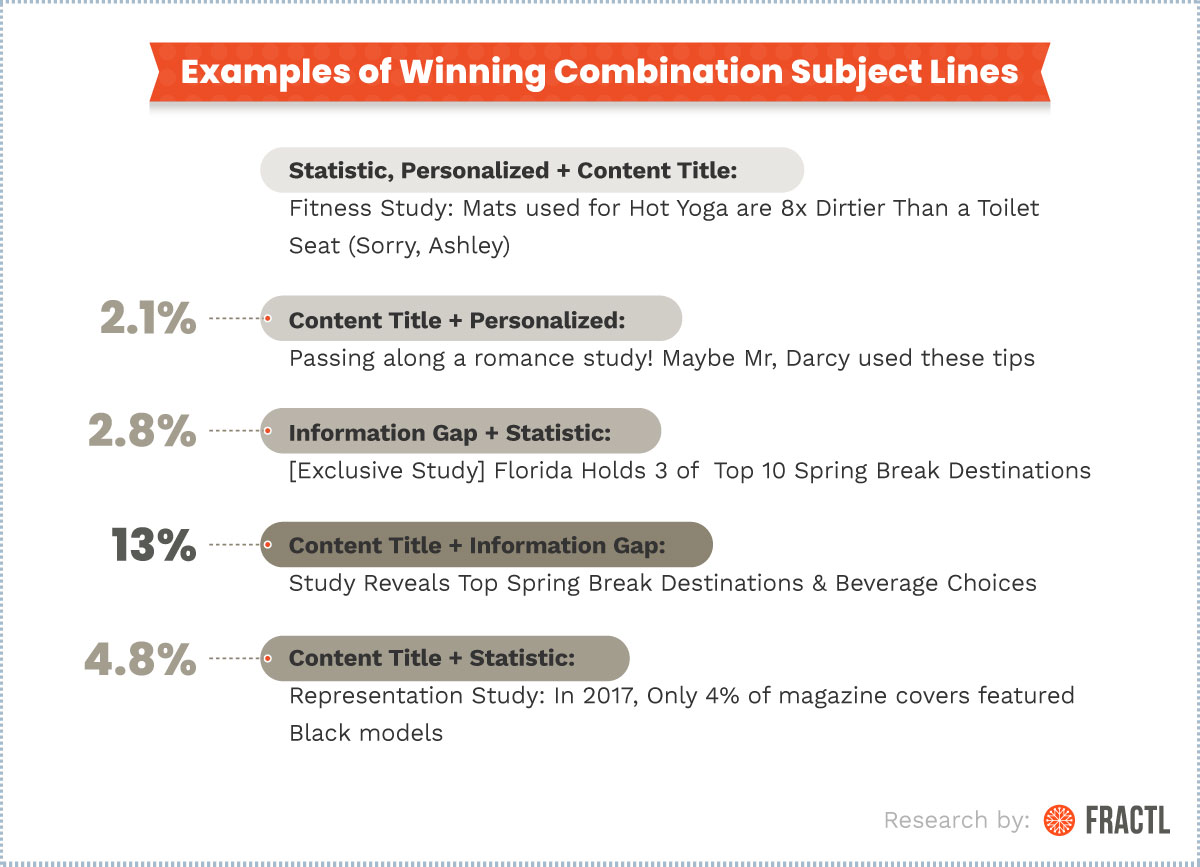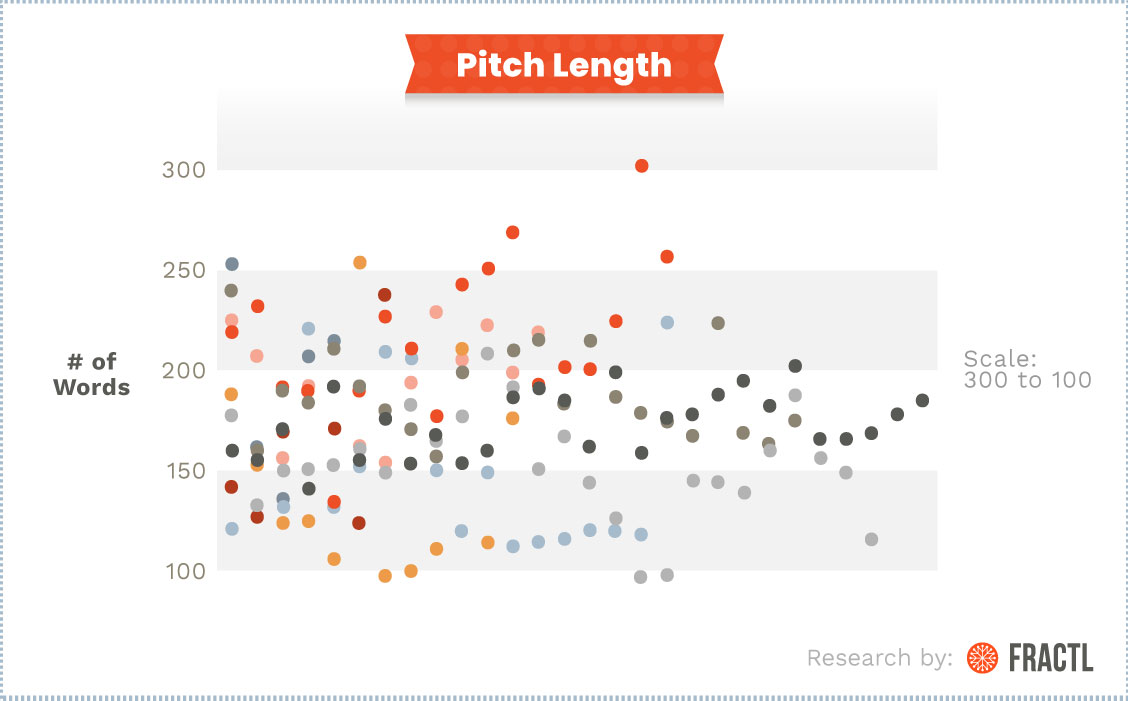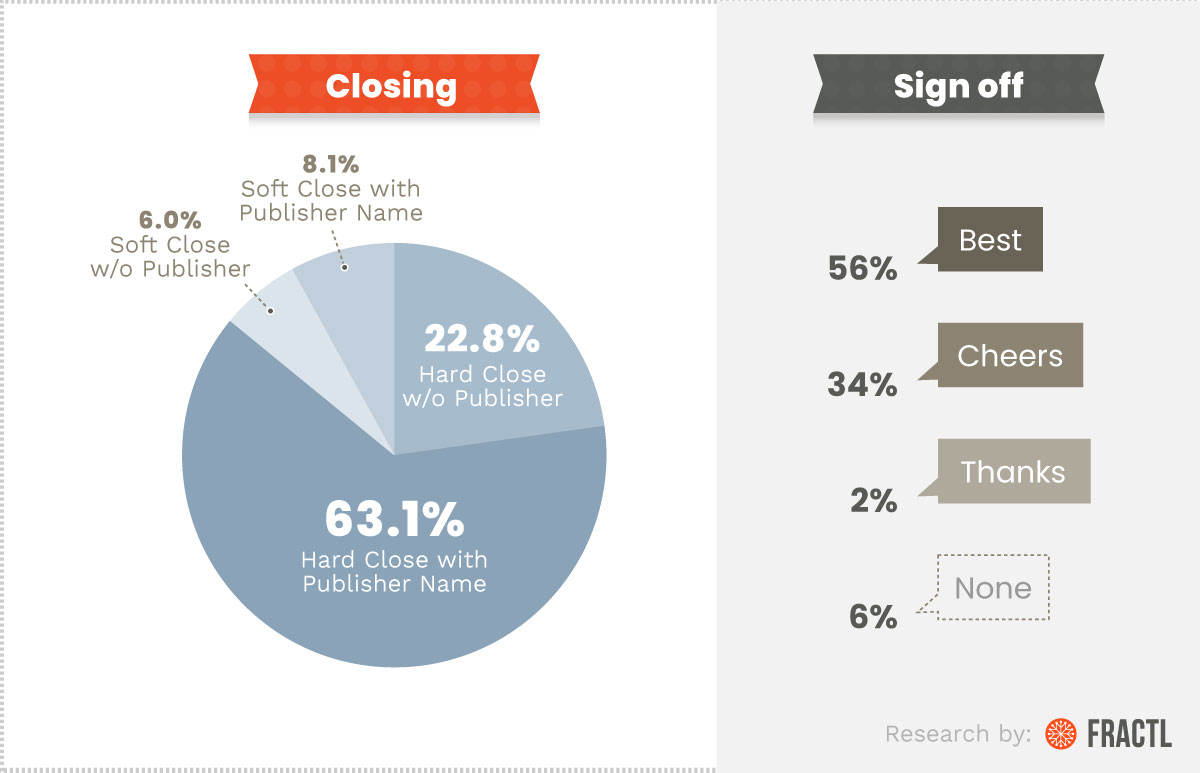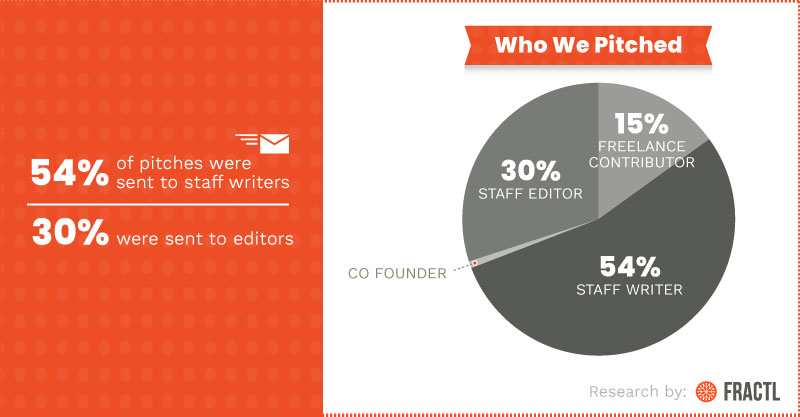In our day-to-day here at Fractl, we actively strive to improve on every step of the marketing process. It’s crucial to consider each moving piece of the assembly line as equally important when approaching your outreach strategy for sending engaging content into the world. The pitch is a major root of the entire promotions phase, allowing the marketer to make their case on behalf of the content. When creating a successful pitch, marketers have spent much time and effort into trying to figure out what works.
The way you construct your pitch can either lead you to success with publishers or become the reason for a campaign’s downfall. Determining which traits comprise a successful pitch is extremely valuable to any digital PR professional.
In this new research, we analyzed each step in how we construct every part of the pitch: creating a captivating subject line, including key details in the body, and mastering the close. As we examined 150 successful pitches that Fractl earned coverage from over a three-month period, we discovered trends that create a framework for a successful pitch from start to finish.
A summary of our findings can be found below.
A Variety of Subject Lines Prove Successful
At Fractl, we try to craft our subject lines in a way that reflects what we have learned through experience pitching content to publishers. Our subject lines tend to fall into 4 categories:
1) Statistic-Based
2) Information Gap
3) Content Title
4) Personalized
To learn more about how to craft the perfect subject line and how to define these categories, read our email pitch study here.
Consider Combining Different Subject Line Styles
We found our team often utilized a combination of the above types to create truly compelling and open-worthy subject lines. All of the above are examples that resulted in placements. Get creative with your subject lines for ultimate success.
Pitch Length: What Do Publishers Desire?
Pitch length is important. The majority of journalists would like to see pitches that are 100 to 200 words long. Our team’s average pitch length was 174 words, with some pitches containing more detail than others and others short and to the point.
Even though our team often pitches very complicated and data-heavy content campaigns, we manage to say under 200 words most of the time because we use bullet points.
The Perfect Close: What Does It Look Like?
When conducting this survey, we sought out to find the answer to the question: What types of closings are favored? We used the sales model of closings and defined closings by “hard close” and “soft close.” Then, we indicated whether the name of the publisher was included. We also looked at different sign off messages to establish consistency in successful pitches, all the way to the last word.
Overwhelmingly, hard closes that directly mention the publisher name were the most successful method. An example of a hard close with publisher name is “Do you want to cover this in an article for Yahoo News?”
The Receiver of the Pitch
Who you contact is just as important as the content of your pitch. Reach out to the wrong person, and your content will never see the light of day. More than half of the time, our team pitched staff writers as opposed to editors or freelancers.
Creating Your Own Successful Pitch
When trying to nail down the secrets to a successful pitch strategy, there is no real black-and-white answer. It’s dependent on a range of variables including who you pitch, the words you choose in the pitch, and the content itself. Establishing trends and variances can better help us evolve as a marketing agency and bring newsworthy content to the right publishers.
Our Methodology:
We manually collected all successful PR pitches from our senior team members for 3 months, from Jan 1, 2018, to March 30, 2018. A successful PR pitch is defined as a pitch email that resulted in a client placement. We selected to isolate and analyze the pitches our supervisors sent because we wanted to highlight the most universal takeaways from a smaller, (and more experienced) sample size. We then manually analyzed individual aspects of each pitch, categorized as:
- Publisher Name
- Writer Name
- Type of Contact Email (personal, work)
- Writer Role (Editor, Freelancer, etc)
- Primary Subject Line Type (Content Title, Statistic)
- Secondary Subject Line Type (if applicable)
- Authority Signal (Study, Report, Infographic, etc)
- Exclusive Mention in SL
- Was this a Follow Up (Yes or No)
- # of Bullet Points
- # of times ‘Exclusive’ appears in the body of the email
- Total # of Links
- Statement adding Value
- Type of Closing
- Type of Sign Off (Cheers, Best, etc)

